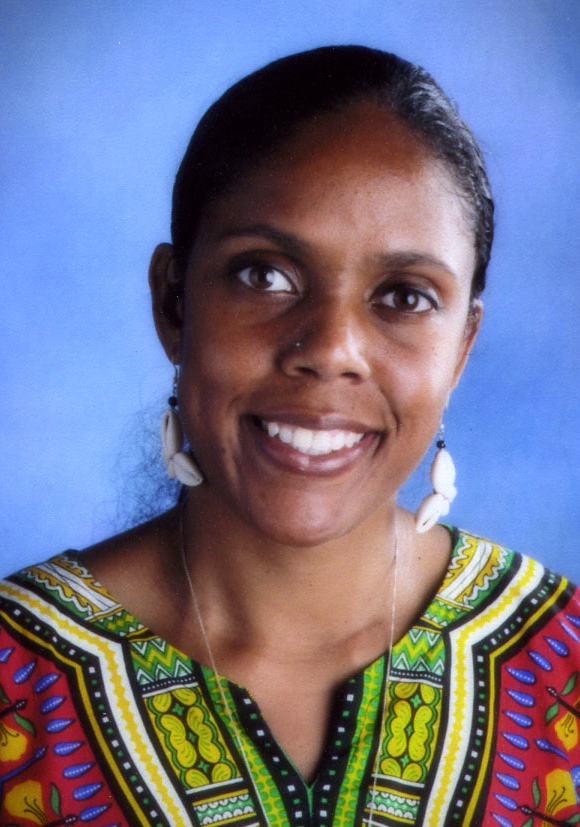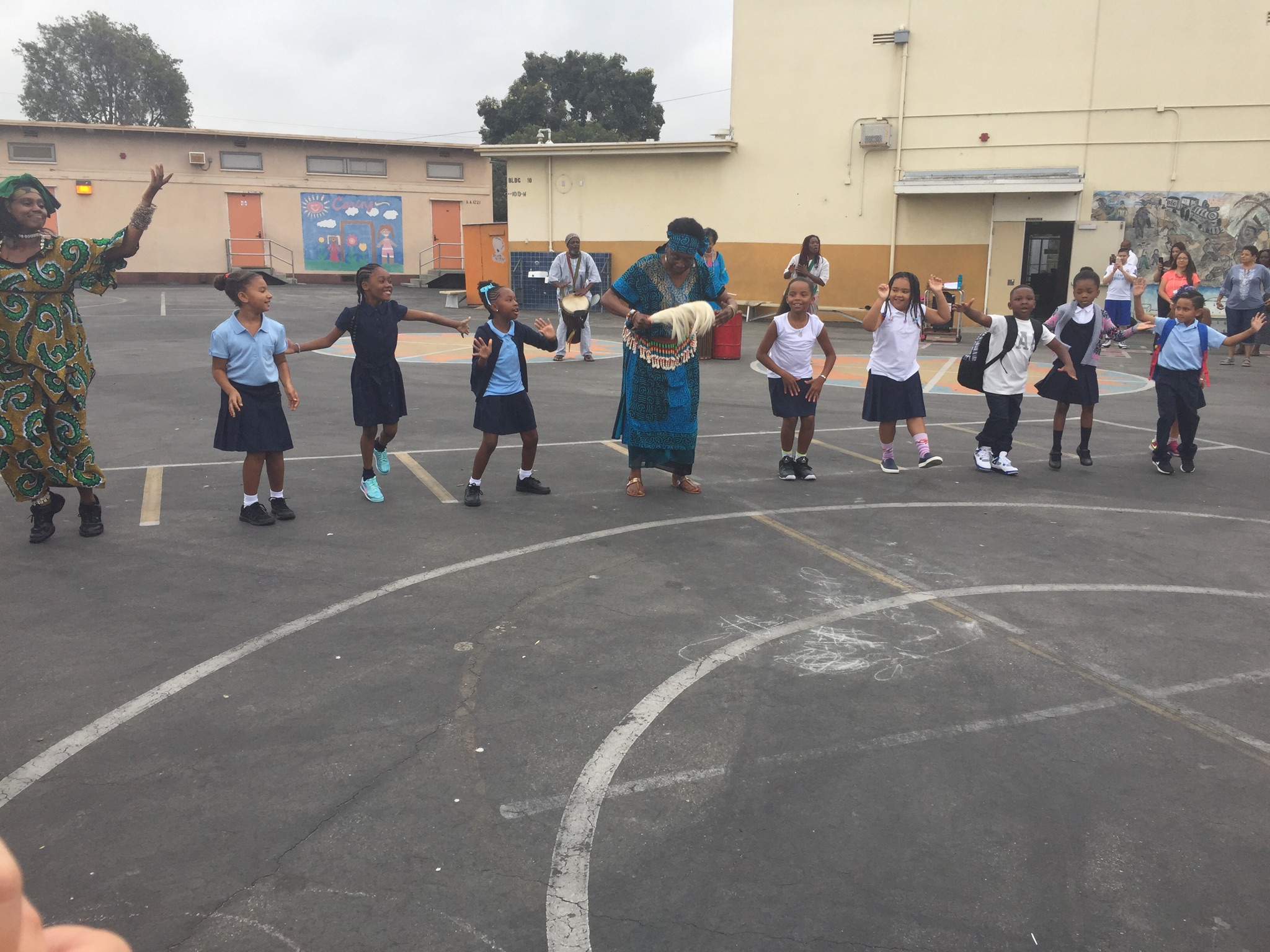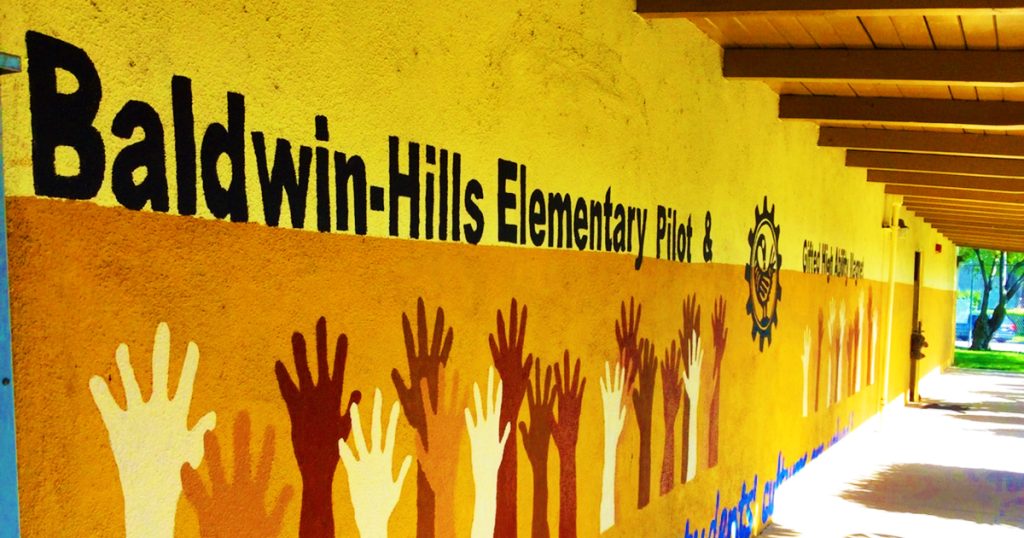This is the sixth post in a year-long blog series on teacher retention. In the prior post we highlighted lessons learned from a school that has focused on building positive culture and climate. In this entry, we hear from a school principal on how their culturally responsive school has engaged teachers.

By Letitia Johnson-Davis, EdD, principal of Baldwin Hills Elementary in Los Angeles, California.
At our school, Baldwin Hills Elementary in south Los Angeles, being culturally responsive and having the autonomy to develop instructional units that are student-centered has truly engaged our teachers.
Culturally responsive pedagogical practices, paired with engaging scholars in 21st century skills and competencies, is the frame upon which we build our curriculum. Our students read texts, explore histories, and see reflections of who they are culturally as their first teaching—and as the foundation upon which all other learning is set. This level of relevance shows the level of value we place on our students, recognizing their worth and value as children of color, and it is a means not just to bring about affirmation and validation but to push the level of rigor.
Our teachers were interviewed this past spring as part of our pilot school quality review, during which they shared quite a bit around their sense of empowerment, agency, and overall satisfaction working in our culturally responsive school setting. Salient highlights of those interviews are what follow.

“I’ve taught for 22 years here and as a pilot school, it has felt like a breath of fresh air. We are no longer confined to district mandates and curriculum guides but instead are able to infuse what we are passionate about: social justice.” Several other teachers mirrored those sentiments, sharing that they feel less restricted at our school. Being able to select our own literature and design our own units where we don’t have to “sneak in” different books is liberating, they said.
Others went on to share their appreciation for how we get to purposefully embed and consider culture in everything we do, where students get to see themselves represented consistently through our unit themes and literature titles. Students also have the chance to look critically at current events through a culturally responsive lens.
Our autonomies as a pilot school have enabled our school community to be able to design our instructional framework based on what’s important to us. Our teachers can now teach content and frame learning experiences for our students based on what we feel to be of value; it’s affirming and validating for our students, as well as empowering and liberating for our teachers.
Teachers spoke about the focus on meeting student needs, being student-centered, and how that comes about at our school. “This is my thirtieth year teaching; I was at an affiliated charter prior and this is my fifth year here. And I can say that at Baldwin, we truly are given freedom to meet students’ needs.” Valuing the opportunity to tailor our instructional practices to meet students’ needs, the autonomy to address where students are based on teacher experience and expertise, and the social justice mandate we collectively feel in meeting the needs of all students were sentiments echoed across teachers.
One teacher put it this way: “We do not keep our students in a box… we make a big effort to ensure we know our kids and plan intentionally to meet their needs.”
To be able to plan strategically to address student needs takes time; that time has been purposefully engrained in how the school schedule is designed. Teachers are provided time each week to collaborate around student needs, looking at data and creating action plans to increase student yields. Likewise, every other week, teachers meet in grade levels to plan; this is paired with sub release time provided to teachers at the close of each trimester to collaboratively refine unit plans that will be delivered to their scholars for the upcoming term.

One teacher stated, “I’ve been at this school for I believe 17 years now and there is more collaboration here than ever before.” Teachers noted how indispensable the grade level planning and meeting times are. Another teacher commented, “We are always collaborating with our colleagues here.”
There are also opportunities for teachers to observe one another’s practice, and that process has been continually refined over the years with teacher voice and feedback around how the process is structured.
Teachers having voice, feeling a sense of ownership, and knowing they have a seat at the table for decision-making was another key theme that came to light during the interviews. They mentioned being a teacher-powered school and noted ways that teachers really have say in how our school’s practices and policies develop. “With our budget, we are presented with options/suggestions and we as a staff decide what is best” was one example given by a teacher, while another shared, “We build our staff through our staff selection committee where all stakeholders (teachers, parents) sit on the committee.”

Our Governing School Council was also mentioned as a space with parents and teachers being real stakeholders and decision-makers.
The final question of the interview was an open one where teachers could share any thought they felt the Pilot School Quality Review team should know. There was a potpourri of responses ranging from discussion around ongoing opportunities to promote reflection and growth, to our school cultivating a culture of observing colleagues to strengthen our collective work. From seeing their fellow teachers and principal as great resources, to teachers feeling supported through both mentorship between National Board Certified Teachers and new teachers, and professional development that promotes hands-on learning shaped by teacher voice and leadership.
The sentiment, however, that was mentioned most during the interview was “I love teaching here; I am happy here.”
Annually within our school district, stakeholders participate in a school experience survey; one section is focused around teacher satisfaction. Based on that survey data for the 2018-2019 year, 83% of our teachers expressed overall teacher satisfaction at our school, while 100% of our teachers agree or strongly agree with the statement “I enjoy teaching at this school.”
The level of autonomy, agency, and empowerment teachers feel to make decisions for the school, but even more for the students in their classrooms, all contribute greatly to teacher satisfaction at Baldwin Hills. Instructionally, being culturally responsive where students see reflections of self and question the pervading narrative through a critical lens are important practices within our school, and teachers having the freedom and dedicated space to make those instructional decisions are also paramount for us.
The final word here is the voice of a now fourth year teacher: “This is the only school where I’ve taught. I love it here and there’s nowhere else I can imagine being.”
Found this useful? Sign up to receive Education Evolving blog posts by email.
We are grateful to the McKnight Foundation for their generous financial support for this series.
